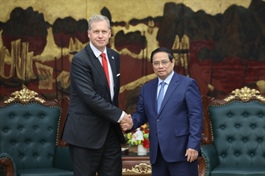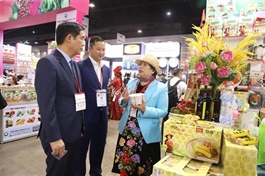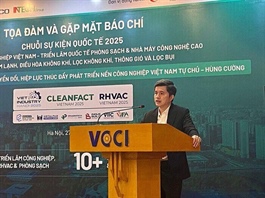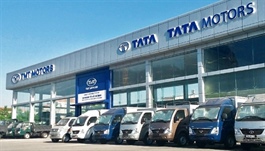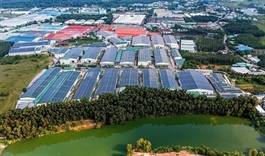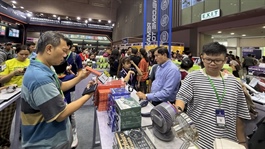Exporters attempt to make most of US tariff impasse
Exporters attempt to make most of US tariff impasse
Exporters are racing to finalise shipments before elevated tariffs imposed by the United States snap back into effect, triggering a flurry of short term logistical manoeuvres and long-term strategic shifts.
The temporary tariff relief announced in early May by the US administration paused massive duties on select imports from countries like China, India, Vietnam, and the European Union. Yet, with the truce set to expire in August, global exporters are wasting no time.
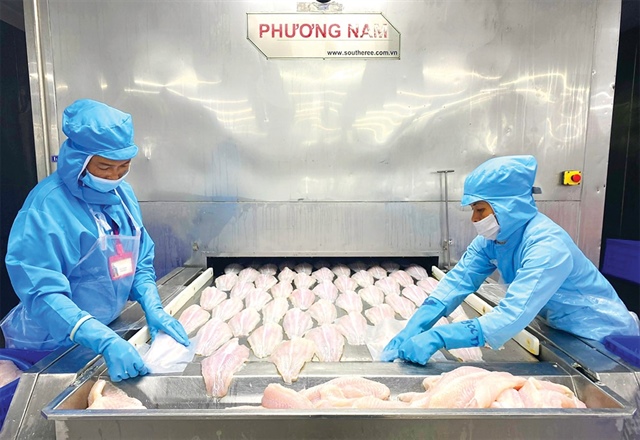
Some producers are working at full capacity in order to get ahead before any more major changes, Photo: Le Toan |
Retail giants in the US such as Walmart, Target, and Costco have accelerated purchase orders and expedited shipments of summer goods, including apparel, toys, home products, and electronics, hoping to beat the clock before potential tariff hikes kick in again.
Walmart, which has over 4,600 stores in the United States, gets its merchandise from Canada, China, India, Mexico, and Vietnam, among other nations. Those countries face at least 10 per cent in tariffs, and imports of steel, aluminium, cars, and auto parts face 25 per cent tariffs. For global suppliers, this means overtime in factories, congested ports, and rising transport costs.
Container shipping lines report surging demand on Asia-US routes. Ports like Yantian in China and Nhava Sheva in India are at full capacity. In Vietnam, exporters are reporting tight container availability at Cat Lai and Haiphong.
Nguyen Van Kich, chairman and CEO of Ho Chi Minh City-based Cafatex, one of Vietnam’s key seafood exporters, said the company swiftly responded the moment the tariff pause was announced.
“We held an emergency meeting that day to mobilise resources for raw material procurement and production,” he said. “Since then, our plant has been at full capacity, day and night. We are racing to fulfill not only signed contracts but also new ones resumed after shipment delays caused by US tariff threats.”
Right now, the company is laser-focused on clearing these contracts. “If new ones come, they must also be delivered within this 90-day window. After that, we’ll have to wait and see,” Kich added.
Le Hang, deputy secretary general of the Vietnam Association of Seafood Exporters and Producers, said that many seafood enterprises have actively seized the opportunity to export to the US during the 90-day window. “Short-term opportunity must not obscure long-term thinking. Vietnamese companies need to be cautious and diversify markets to Europe, Japan, and South Korea through free trade deals. Reducing reliance on any single market is crucial,” Hang said.
The garment sector is following suit. Vu Duc Giang, chairman of the Vietnam National Textile and Garment Group, confirmed that his group has accelerated production to complete all Q2 contracts and ensure prompt delivery.
“The company has also developed contingency plans, focusing on customer negotiations, new market exploration, and sourcing alternatives for inputs,” Giang said.
Despite uncertainties, Vinatex is holding steady to its 2025 targets. Giang described the current window as short but invaluable. He said it provides an opportunity not just for trade, but to demonstrate Vietnam’s resilience and strategic agility. Vinatex is finalising contracts through the end of June and opening a new branch and logistics centre in Hanoi.
Meanwhile, textile company Thanh Cong, also based in Ho Chi Minh City, has experienced both extremes. Prior to the US tariff pause, multiple buyers had requested to cancel orders following a 46 per cent US duty on Vietnamese goods. Once the 90-day reprieve was announced, those cancellations were withdrawn, indicating a notable shift in sentiment.
One Thanh Cong executive expects a spike in June shipments as partners push forward deliveries originally slated for August. The firm’s fully integrated supply chain, which imports only raw cotton from the US and West Africa while processing all other steps in-house, gives it an advantage in meeting new US traceability requirements and maintaining favourable tariff status, the executive said.
Dr. Can Van Luc, a member of the National Financial and Monetary Policy Advisory Council, emphasised that amid the new US tax policy, Vietnam does have some opportunities in attracting investment and expanding market share if negotiations are handled effectively. However, the challenges will be considerable if high tariffs are imposed.
“The government needs to make the most of the negotiation opportunity, and offer concrete commitments and solutions to secure reasonable tariff rates. At the same time, it must continue to restructure the economy and enhance autonomy, resilience, and self-reliance,” Luc recommended.
As for the business community, he noted that now is the time to accelerate digital transformation and green transition, while also making full use of current support policies such as fee reductions and VAT cuts. “In particular, transparency in origin and information sharing with partners will be key factors in building trust and reducing risks across global value chains,” Luc added.
- 09:46 30/05/2025




